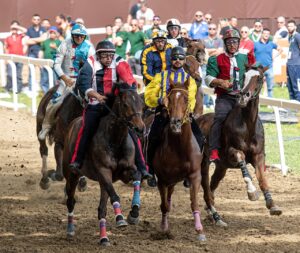 For years, turf meant Britain and dirt meant America. The gap is slimmer now, and the numbers back it up. Field sizes, timing standards and race plans have shifted as horses and people travel more. These changes reach training rooms, sales rings and the way races unfold on the day.
For years, turf meant Britain and dirt meant America. The gap is slimmer now, and the numbers back it up. Field sizes, timing standards and race plans have shifted as horses and people travel more. These changes reach training rooms, sales rings and the way races unfold on the day.
Let’s dig into how those shifts shape programmes, pace, breeding and data, then move straight into the core analysis.
Turf Meets Dirt and the Calendar Shifts
The UK has a turf first tradition with Flat races from five to twelve furlongs and jumping through winter. The US leans toward dirt with a focus on sprint and middle-distance events. That gap is closing fast. US tracks now run more turf races than ever, and many top graded events take place on grass. The UK has also expanded its all-weather programme, giving dirt-bred horses chances to perform on surfaces that ride closer to US dirt.
Calendars have shifted, too. US autumn championships now reward strong European turf form, so British trainers plan their peaks around that season. In return, major UK spring meetings attract quick US sprinters who bring early speed and fresh pace patterns. These changes have reshaped how both sides prepare their runners. For punters following these trends, checking reliable horse racing picks can reveal where cross-Atlantic form and sharp data meet, helping track the next breakthrough performer.
Handicaps, Allowances, and How Programmes Evolve
Programme design shows a direct influence in both directions. The UK still runs a deep handicap ladder that sorts horses by official ratings. The US uses allowance and claiming structures that move horses through conditions. Over time, both sides have borrowed the best aspects of the other.
British race planners have expanded conditions races for progressive types who would otherwise be stuck between a stiff handicap mark and Group class. American secretaries have adjusted claiming and starter conditions to mimic a ratings-like progression and to keep fields together.
Cross shipping amplifies the trend. When British yards target allowance turf races, they highlight how competitive those races can be, even without set weights and penalties. When American barns place horses in UK handicaps off a new mark, they demonstrate how ratings can unlock opportunities that condition books miss. The result is a slow alignment, where each jurisdiction retains its identity but removes dead ends that previously trapped horses at the wrong level.
Pace, Cover, and Racecraft Across the Atlantic
Race shape remains the clearest tactical export. US racing prizes gate speed and efficient fractions, with riders judging pace by splits that tick like a metronome. UK riders grow up with concepts of cover, rhythm, and a late change of gear, especially on undulating tracks and long straights.
Put them together, and both camps upgrade. British jockeys bring stronger sectionals to the table because US races penalise mid-race dawdling. American jockeys learn to conserve energy in a headwind on the Rowley Mile and to delay the move up the hill.
Sectional timing has turned this exchange into hard data. US tracks have posted precise splits for years, which sharpened speed figure culture. The UK’s broader adoption of electronic sectionals has given trainers a lap chart to match their eyes.
That has produced practical changes. Workouts in the US already use breezing over short, sharp distances. British yards now mix steady canters with short timed works to build a US-style turn of foot for international raids. Stateside, turf riders have embraced cover and paced finishes when shipping to tight UK turns is not part of the plan, but riding a long straight at Newmarket or Ascot is.
Breeding and Sales That Travel Well
Sales rings reveal the biggest long-term shift. Turf sires with proven European milers have found demand in the US as turf purses and black type opportunities grow. That is not guesswork. Buyers want stallions whose progeny clock off ground-related efficiencies and quicken over the final two furlongs.
At the same time, American speed influences have crept into the UK through all-weather campaigns and sprint programmes. Two-year-olds that show a quick early pace bring liquidity to both markets, and shuttle stallions have made that flow literal.
This breeding cross talk feeds race tactics. Dirt-oriented pedigrees often produce stock that handles synthetics and sharp British tracks, which increases field sizes through winter. European staying lines have elevated US turf marathon depth beyond a niche level, so meet planners now incorporate longer races that would have struggled to fill fifteen years ago. Breeders respond to that demand with matings that point to those exact distances, knowing the races exist and the black type is credible.
Crossing the Finish Line as One Circuit
The Atlantic no longer divides how the game is played. Schedules, tactics and bloodlines now move in step and push standards higher. The next edge will belong to the team that reads both calendars like one map and places with intent. The smart money treats the UK and US forms as parts of the same puzzle and acts before the market catches up.